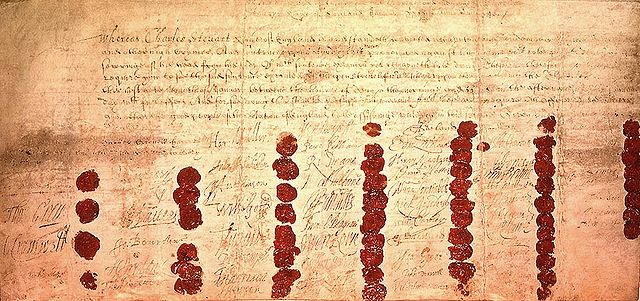12th October 2018
In October 1660 the executions of those involved in the regicide of Charles I began, eleven years after his death. Charles had been brought to trial and executed after seven years of Civil War. On the same day as his death, England was declared a Commonwealth, and the monarchy was then officially abolished.

Many of Charles’ family had fled to Europe, both for their own safety and to help the royalist cause back in England. This included his heir, the future Charles II, who was in the Netherlands when he learned of his father’s death and became a king in exile. His attempts to take back his throne were defeated, and his cause looked set to remain unsuccessful. It was only after the death of Oliver Cromwell, the Lord Protector of the Commonwealth, and the ineffective leadership of his son, that Parliament invited Charles II to return and restore the monarchy.
In May 1660, he entered London in triumph. While a general pardon was issued to those who fought against his father in the Civil War, Charles did not extend this to regicides. He intended to punish those ‘bloody traitors’ who had thought to kill a king. This included the fifty-nine men – which included Cromwell – who had signed Charles I’s death warrant, along with many of the commissioners or officials who hadn’t signed but were involved in the trial or execution.

The trials began. Ten men were executed by being hanged, drawn and quartered – a typical death for those convicted of high treason. The first to die was Thomas Harrison on 13 October. Nineteen more were sentenced to life in prison, while others fled the country. Some were later extradited back to England to face punishment, although not all were captured and spent their lives in exile. One man who managed to escape – John Lisle – fled to Switzerland, only to be later assassinated by a royal agent.
There were two men intimately involved in the execution that could not be identified and punished: the headsman who wielded the axe that beheaded Charles and his assistant who held up the king’s head after the act. They were masked during the execution, making sure their identities were concealed. Despite rumours, and an alleged confession by the Common Hangman of London that was circulated after his death, the identity of the executioner is still unknown.
Not even those who had died before the Restoration escaped Charles II’s punishment. Some, including Oliver Cromwell himself, were exhumed from their graves in 1661 and given a posthumous execution by being hanged and beheaded. Cromwell’s skull was placed on a spike at Westminster, a warning and a reminder to what happened to regicides.
Images: Death warrant of King Charles I of England, 1648/9, via Wikimedia Commons. Charles II of England in Coronation robes, by John Michael Wright c.1661-1662, RCIN 404951, Royal Collection Trust / © Her Majesty Queen Elizabeth II 2018, via Wikimedia Commons